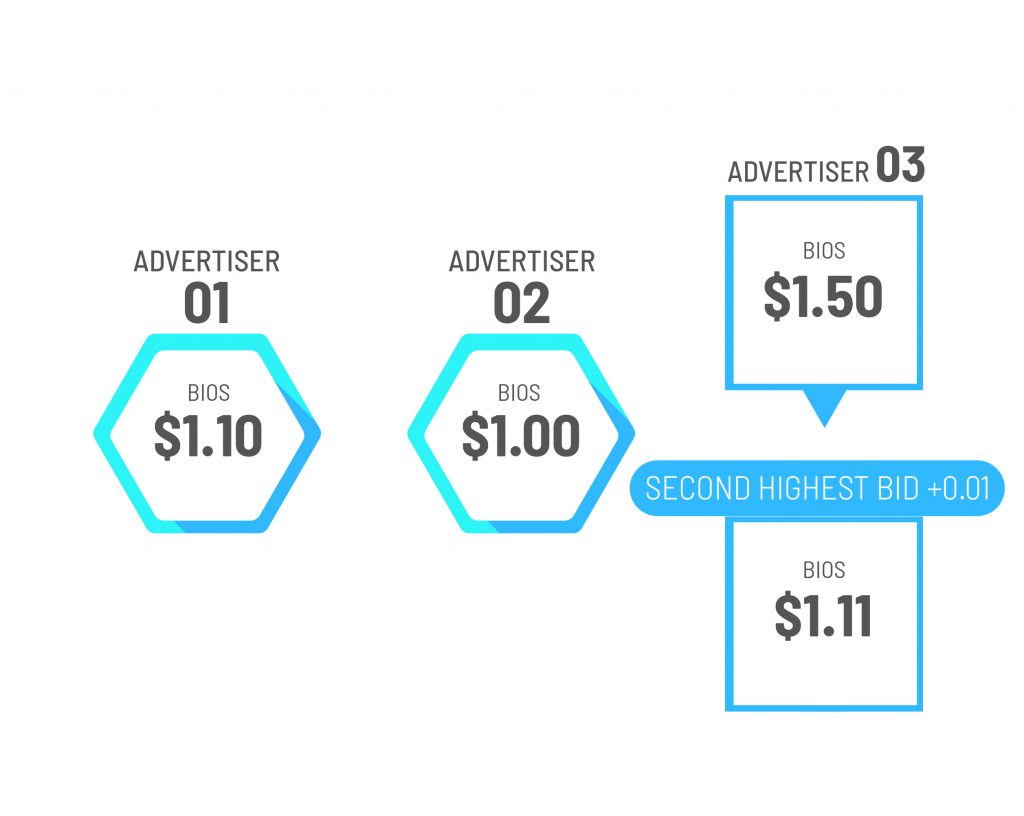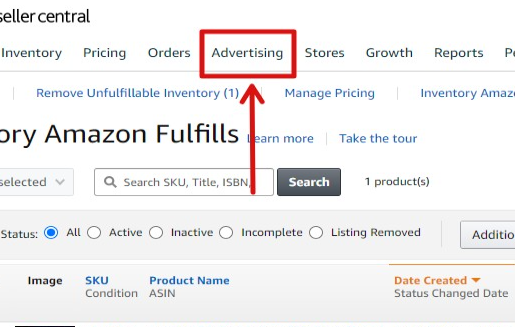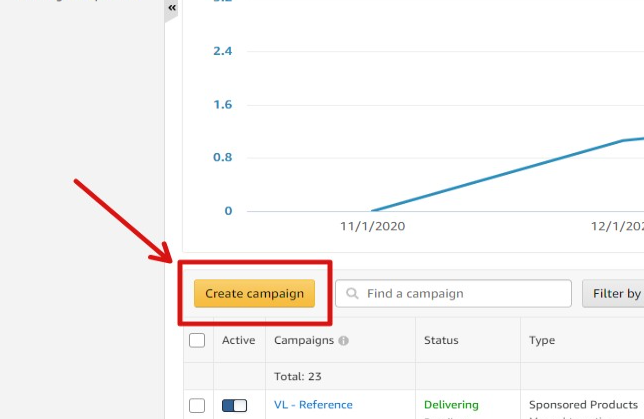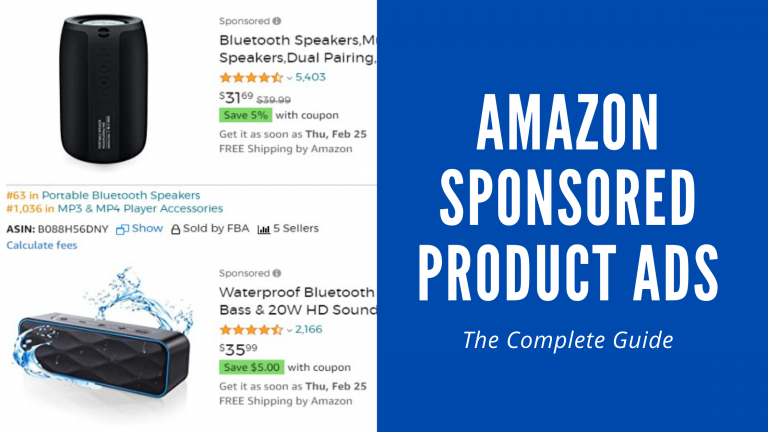Last updated on April 22nd, 2024 at 12:40 pm
For any Amazon seller looking to increase visibility and sales, Amazon Sponsored Products ads have been, and likely will continue to be, the method of choice.
However, you may be hesitant to get started because here is quite a steep learning curve.
For starters, there is a slew of different metrics and terminology that you will need to familiarize yourself with. Then there’s the actual strategy part to it.
This guide will bring anyone up to speed with how Amazon Sponsored Products works and how you can get started using it to increase sales.
What is Sponsored Products on Amazon?
Amazon Sponsored Products ads are PPC (pay per click) ads that promote the visibility of your products in the search results.
For instance, you may have seen search results that look like this:
Whenever a product has the word “Sponsored” in it in the search results, you know you are looking at a Sponsored Product ad.
Where Can Sponsored Product Ads Appear on Amazon?
Sponsored Product ads can appear in multiple places on Amazon.
Aside from the top of search results, they can also appear further down the list.
Plus, they can even appear on other product’s listings.
Is Sponsored Products Worth It?
Why Should I Do Sponsored Products?
Sponsored Product ads are the main performance marketing channel on Amazon and it is known to be a key revenue generator.
For starters, Sponsored Product ads appear directly in the search results in Amazon. This makes them highly visible.
Because these ads appear in the search results and on other listings, you will be able to put your product in front of shoppers who are further on in the buyer’s journey (lower funnel). This means you will have a much higher chance of conversion since these shoppers are ready to purchase.
What is the Cost?
As previously mentioned, Sponsored Product ads are PPC (pay per click), which means you will only be charged when someone actually clicks on your ad.
It’s hard to say what the average cost would be. This is because it widely depends on the niche you’re in as well as what keywords you target.
Generally speaking, the more competitive the niche, and the more searches per month for the keyword you’re targeting, the more expensive it will be.
The CPC (cost per click) is determined via a real-time auction that is constantly running on all keywords.
Whenever you create an ad, you have to set a bid. The bid is the price you are willing to pay for each click. Amazon will then place your ad accordingly depending on what other advertisers bid.
However, your bid is not the same as your CPC. If you currently have the highest bid, you will win the auction but will only be charged $0.01 more than the second highest bid.

In the above example, Advertiser 3 wins the auction with a bid of $1.50. If their ad is clicked, they will only be charged $1.11. This formula also applies to all following ad ranks, e.g. Advertiser 1 (who wins rank #2) will only pay $1.01.
Sponsored Products Terminology
In order to run Sponsored Product ads effectively, there are some terms you need to know.
- Targeting: when you set up your ads, you can choose whether you’d like to target your ads based on keywords, product ASINs, categories on Amazon as well as external websites for shoppers who viewed similar products on Amazon.
- Search Terms: this refers to any search query phrase that a shopper typed in the Amazon search bar, or, for product page placements, the ASIN the ad appeared on. Depending on the match type used, search terms and targeting can be different. A target (e.g. keyword) can cover multiple search terms.
- Keyword Match Types: this refers to the degree of accuracy between the targeted keyword and the customer search term in order for the ad to appear. There are 3 types of keyword match types: Broad, Phrase, and Exact.
- Negative Targeting: this is used to help advertisers exclude specific keywords or ASINs from their campaigns. This can be particularly helpful in controlling ad spend.
- Campaign Types: these are split between automatic and manual campaigns. Automatic is the simplest―just set it up and let it run, and Amazon’s algorithms will do the rest. In a manual campaign, you choose what to target, giving you great precision and control over your campaign.
- Dynamic Bidding: selecting “bid down” and “bid up or down” allows Amazon to adjust your bids in real time based on the likelihood that your ad will convert to a sale.
- Adjust Bids by Placement: you can use this feature to modify bids in Top of Search or Product Detail Pages. A bid modifier of 0% to 900% can be applied.
Sponsored Products: Key Metrics
The following is a summary of the most important key performance indicators (KPIs) you need to optimize your Sponsored Product ads.
- Advertising Cost of Sale (ACOS): ACOS is a percentage of your ad spend divided by the ad revenue. It allows you to see whether your ads are profitable.
- Return on Ad Spend (ROAS): ROAS is your ad revenue divided by ad spend (the inverse of ACOS). It also allows you to see if your ads are profitable by showing you how much revenue the ads produce per dollar you spend.
- Cost per Click (CPC): CPC shows you your ad costs and is a good indicator to determine competition levels in an ad category.
- Impressions: this is how many times your ad appears in front of shoppers.
- Click-through Rate (CTR): CTR is your number of clicks divided by your impressions. It’s an indicator of how many people are actually clicking on your ad and can be used to determine effectiveness.
- Conversion Rate (CR): CR is the number of orders divided by the number of clicks. It’s used to determine how persuasive your ad and product listing are.
How to Set Up a Sponsored Products Campaign
In this section, we’ll teach you how to go into Campaign Manager and set up a campaign.
First, log in to Seller Central and click Advertising > Campaign Manager.

Then, click on Create Campaign.

Set your campaign name, budget, and duration.
Lastly, decide if you want to run a manual or automatic campaign.
Not sure how to strategize your campaigns? Our next section will teach you the fundamentals of Sponsored Product strategy.
Sponsored Products Strategy
Step 1: Make Sure You’re Eligible
Before you even start, there are requirements you must meet before you can advertise in this way. Here are the basic requirements:
- An active Amazon professional seller account.
- Ability to ship to all US addresses.
- Product listings in one or more of the available categories.
- Products must be brand new.
- Must be eligible for the Buy Box.
Eligibility for the Buy Box can be a tricky subject, but generally you will win the buy box based on the selling condition of your product (new products are always prefered), price, shipping charges/availability, and customer service. The more you excel in these areas, the better chances you will have of winning the Buy Box.
Step 2: Choose Automatic or Manual
We generally recommend running both Automatic and Manual campaigns at once.
Automatic campaigns are great for keyword research which you can then harvest. You’re essentially leveraging Amazon’s massive database to search for opportunities you might not have thought of. You can then plug these opportunities into manual campaigns to really milk the most out of it.
Manual campaigns are great for testing and refining strategies. They also offer much more control over the whole process of bidding and targeting. That said, you need to know what you’re doing, otherwise your campaigns will not be profitable. Start by using your favourite keyword tool to plug in keywords into your manual campaigns.
As you can see, one is not necessarily better than the other. It’s best to utilize both simultaneously.
Step 3: Setting Everything Up
Next, you will need to set your daily budget, start & end date, bidding, products advertised, keywords and match type.
For automatic campaigns, you will only be able to customize the first four. Only manual campaigns can customize keywords and match type.
Here are our recommendations for each step:
- Daily Budget: set this to $100. Now hold up, we know what you’re thinking. This doesn’t mean it will spend $100 every day. This is just simply a cut off point where Amazon will deactivate the ad for the day, i.e. its main function is to protect you in case an ad runs wild. You need to set this high, because your ad performance can suffer if the budget is too low.
- Start & End Date: set the ad for whenever you’d like it to begin. The end date can be left blank. Whenever you want to end it, you can always manually turn it off.
- Bidding: don’t go by what Amazon suggests―you’ll usually end up spending too much. Set your starting bid to $1 if you’re just launching, otherwise $0.75. You will be adjusting this up or down during optimization.
- Products Advertised: this is the product you want to appear in the ad.
- Targeting: you can pick between keyword or product targeting. If you want to target keywords, consider adding the main keywords you’ve already added in your product listing, as well as harvesting keywords from your automatic campaigns once you have more data. Product targeting is a bit more complicated―see below.
- Match Type: there are Broad, Phrase and Exact match types. Broad match targets keyword phrases with the base keyword in it in any order. Phrase match targets keyword phrases with the base keyword in it in the same order. Exact match only targets the base keyword plus its pluralized form.
For example, here are different keywords that a campaign for “black umbrella” would match for under the three different match types:
- Broad: black umbrella, umbrella black, umbrella for kids black
- Phrase: black umbrella, black umbrella for kids, black umbrella 2 pack
- Exact: black umbrella, black umbrellas
Can’t decide what to pick? We always recommend running one of each.
This is because keywords perform differently under different match types. You won’t know unless you test them out.
Step 4: Management & Optimization
Once you click “Publish”, the work is far from over.
You will have to check up on your campaigns and make adjustments to continually improve their effectiveness.
First, you need to check your Automatic campaign to see if it picks up any high-performing keywords or ASINs. Transfer these over to your Manual campaigns, then negative them in the Automatic campaign.
Next, you want to optimize your ACOS for your Manual campaigns.
This involves adjusting your bids.
You could go into each campaign and manually adjust things, but a more efficient way would be to go into the bulk sheets. That way, you can make changes to everything all in one place.
You can find bulk sheets by hovering over the left pane in Campaign Manager and clicking Bulk Operations.
Here are some things to look for:
- Items Getting High Clicks & Sales but High ACOS: gradually lower the bid by $0.03-5 until your target ACOS is met.
- Items Getting High Clicks & Sales but Low ACOS: either keep the same or increase slightly ($0.01-3) if your goal is to improve organic ranking.
- Items Getting High Clicks but Low Sales: gradually lower the bid by $0.05-10 until it stops getting clicks, or pause if it’s bleeding too much money.
- Items Getting Impressions but No Clicks: leave them be―they don’t cost you anything.
- Items with Few or No Impressions: check if the keyword is missing from your listing. Try increasing the bid.
Make sure to leave a few days in between optimization sessions to allow the updated campaigns to do their thing. That way, you will have more accurate data on which to base your decisions.
Final Thoughts
By advertising with Sponsored Product ads, you will be able to put your products right in front of customers who are later on in the buyer’s journey.
This means that these shoppers already have the intent to buy, so they have a higher likelihood of buying your product.
While many sellers choose to run ad campaigns on their own, this can end up becoming incredibly time consuming.
That’s why many sellers hire an agency like Kenji ROI to run their ad campaigns for them. Sellers can rest easy knowing that they can rely on their agency’s knowledge and expertise to help them drive sales. Plus, it frees up time that they can use to work on other aspects of their business.
Take a look at Kenji ROI’s PPC management services here.


